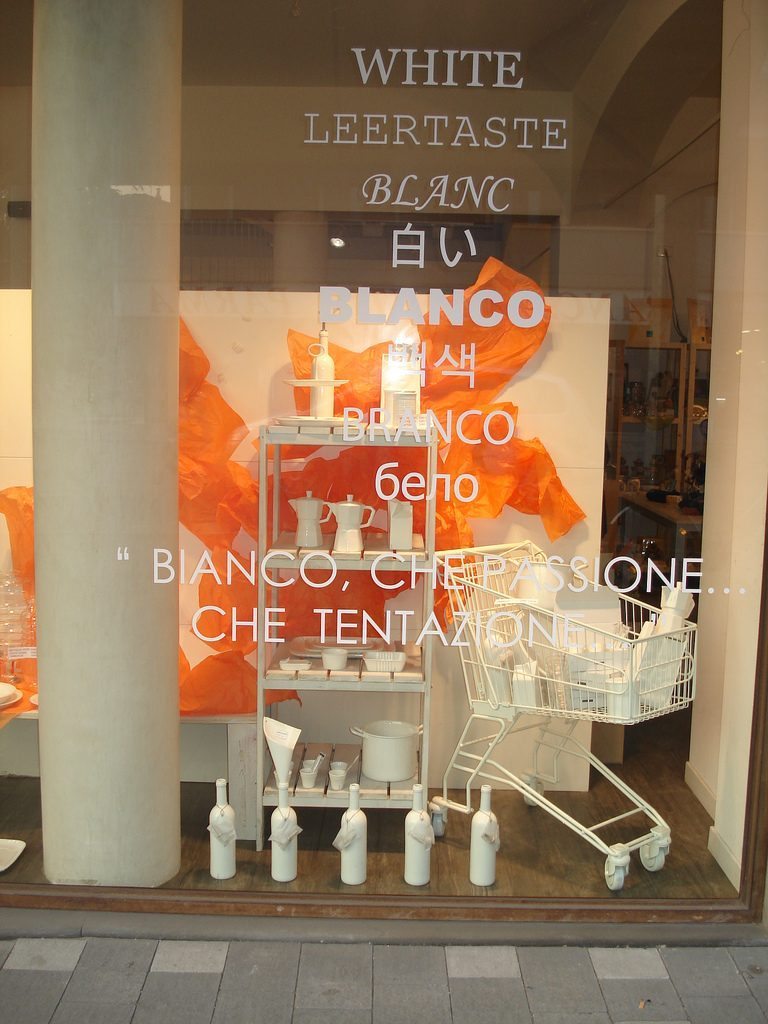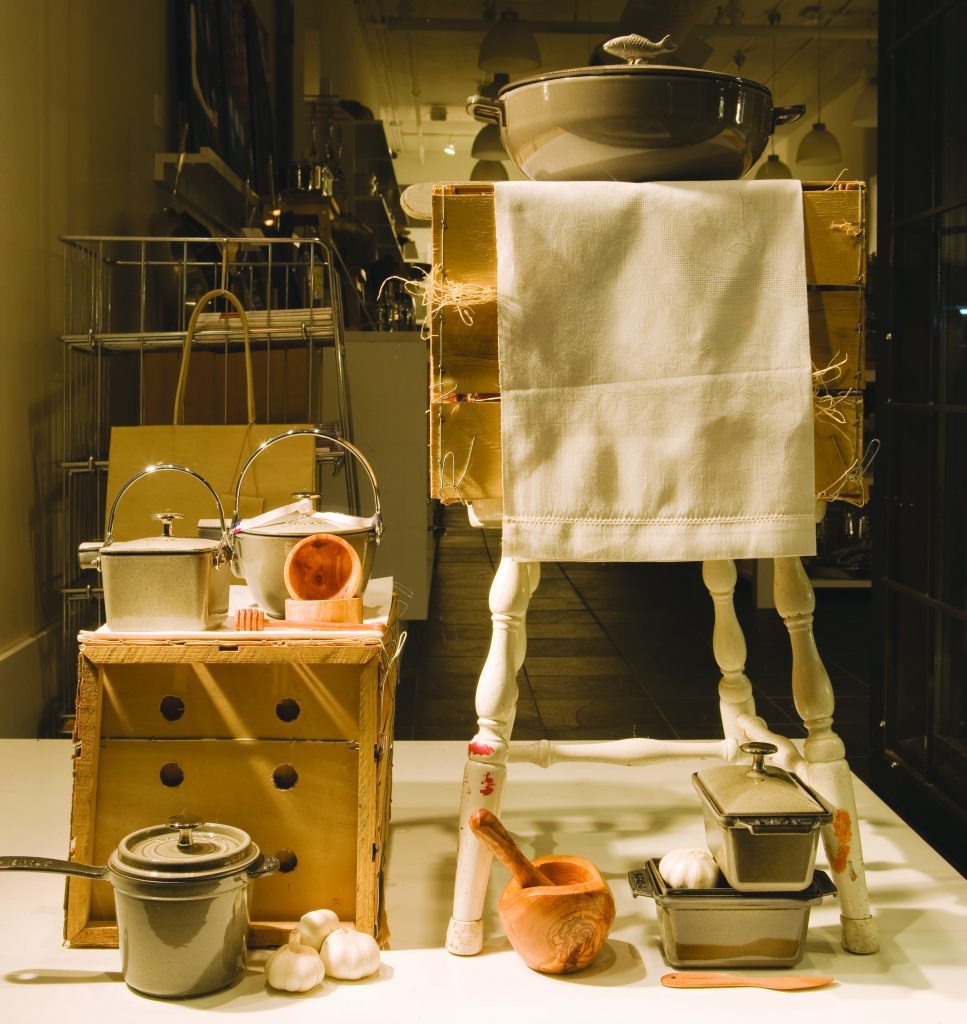By Martin M. Pegler
Props, I would imagine, is short for “properties” and “properties” can be anything that adds something to a scene, a setting, a display. If we were to look around us, we would see we are standing in the center of a field of display props: from the furniture in the room, the plants, the unused rolls of wallpaper, the tableware, the collection of pots and pans, the crushed lamp-shade to the broken venetian blinds on the windows.Faded is not a reason to toss and discard. There is dyeing and painting. Display props only become props when they are removed from where they are usually placed and set into a new—and better still—unexpected surrounding.
This is where the recycling or re-using or re-purposing comes in. Before destroying a thing, consider its intrinsic value as a display prop.

Can you repaint an old kitchen chair, and will its new pink color enhance the presentation of the pink home fashion accessories like throw pillows, napkins, vases, tea cups, etc. set out on it? It will bring the small products up closer to eye-level, and the incongruous “pink” of the utilitarian chair will catch the viewer’s eye.
How much more effective is that old, rusty metal shopping cart—now painted a clear, clean and bright white to get attention as well as carry some of the white products available inside the store. That old bentwood hat rack that is no longer being used can not only add a touch of nostalgia to a contemporary retail scene, but it can actually hold new variations of merchandise where once fashions-of-the-past appeared.
Manual typewriters? Not quite antiques and certainly not terribly useful today, but they are curiosities. They are nostalgic—they are memory pieces—they are quaint and old-fashioned and can compliment the newer than new. An old-fashioned and now no longer functioning sewing machine will get the viewer’s attention and also recall “the good old days,” whenever they were. Don’t dump them.

Treasure them and use them as come-on display props—attention-getters to bring shoppers closer to the product presentation.
The display team should know the worth of these odd, “worthless” and strange (by today’s standards) objects and use them effectively in clever and unexpected ways. The visual merchandising people in the shops illustrated here—both previous IHA Global Innovation Awards (gia) winners—certainly do. We hope they will inspire some of you to look more kindly at worn and underused objects—look more carefully at what is being discarded—adventure into second hand shops, flea markets and garage sales, and the whole world of trash. There is display “gold” in them. Enjoy and “Go Green”!



